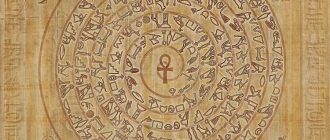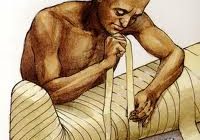Want to learn more about ancient Egyptian mythology? Read on for a historical overview of the religious practices and mythology of the ancient Egyptians…
The ancient Egyptian civilization was stooped in religious mythology, beliefs and rituals. The history of ancient Egyptian mythology dates further back than 3000 years originating from the pre-dynastic era and lasted up till the accepting of the Christian faith by the people of Egypt.
The Egyptians were polytheists and engaged in the worship of a large number of deities. These deities were taken as representative of the various forces found in nature as well as power and thought patterns. The Egyptians would express these mythological ideas through archetypes.
Egyptian religious practices kept on evolving with time. By the 18th century various other archetypes were now being considered as the attributes of one supreme deity who was considered to be a separate entity from the surrounding nature. In many ways the Egyptian belief was now beginning to resemble the Trinitarian belief of Christianity. The core belief was that there is one God but that God can manifest himself in various persons.
Ancient Egyptian Worship
The two fundamental acts of worship for the Egyptians were prayers and offerings. These would be conducted in shrines built inside the houses as well as formal temples that had a group of priests as the managers. Each chapter of Egyptian history had a different set of gods that were worshiped during that specific era. Similarly the myths that were associated with these gods kept on changing over time. In its essence ancient Egyptian mythology never had a consistent hierarchy for its deities nor was it unified by a single theological belief.
This is not to say that there were no overarching beliefs amongst the different Egyptian dynasties that followed one another. One of the most consistent beliefs found in the history of Egyptian mythology is that in every era the belief in the divinity of the pharaoh was consistent. This was one factor that helped unify the country on a political level.
Another aspect that runs through Egyptian history is the belief in the afterlife and the complex rituals associated with this belief. The manifestation of the belief in the afterlife can best be seen in the elaborate customs that were associated the burial of the dead.
Important Egyptian Mythological Characters
There are a number of mythological characters that were held in high reverence amongst the Egyptians through successive dynasties. Foremost amongst them was Horus, best remembered as the fierce, powerful and proud Sun god of Egypt. The eye of Horus is one of the most important mythological symbols of ancient Egypt which was believed to be a symbol for protection from this particular deity.
Nut is the name of another significant Egyptian mythological character that was believed to be the sky goddess. Ancient Egyptian paintings and hieroglyphs depicted her as a gigantic female who is always shown supporting the sky on her back. She was made blue in color and had her body adorned with stars.
The importance that the Egyptians attached to these mythological characters varied with every dynasty. In many cases different dynasties would worship the deity with a different name and a slightly different myth.




